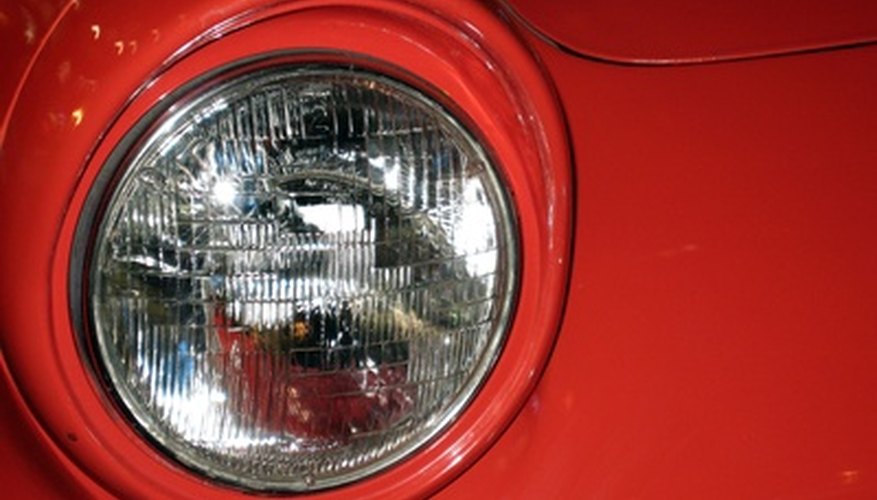Problems with the ground circuits to headlights can cause them to dim or not operate at all.
The ground circuit provides a path for the electricity from the headlight to return to the negative terminal of the vehicle battery.
The ground wire is normally a short wire attached to the vehicle chassis near the headlight. The vehicle chassis itself provides the remainder of the return path to the vehicle battery.
- Problems with the ground circuits to headlights can cause them to dim or not operate at all.
- The ground wire is normally a short wire attached to the vehicle chassis near the headlight.
Remove the connector from the back of the headlight. The connector should contain three wires, although it could contain two or four wires. If it contains two or three wires, one wire is ground. If it contains four wires, two of the wires are ground.
Trace the wires back from the connector as far as you can see them. If one (or two for four wire connectors) is connected to the chassis, you have identified the ground wire(s) and you should go to the next section. If not, go to the next step.
- Trace the wires back from the connector as far as you can see them.
- If one (or two for four wire connectors) is connected to the chassis, you have identified the ground wire(s) and you should go to the next section.
Turn on the ignition of the vehicle and turn on the headlights to high beam.
Set the multimeter to DC Volts to measure 12 volts. Connect the ground lead to the vehicle chassis or the battery negative terminal. Test each of the wires in the connector. One should read 12 volts. This is the high beam power and this wire is not ground. If there are only two wires, the remaining wire is ground and you should turn off the ignition and headlights and go to the next section. If there are three or four wires, go to the next step.
Switch your headlights to low beam and check the remaining wires with the multimeter. Again, one should read 12 volts. This is the low beam power and this wire is not ground. The remaining one or two wires are ground. Turn off the ignition and headlights.
- Switch your headlights to low beam and check the remaining wires with the multimeter.
Set the multimeter to measure resistance (ohms). Place one lead on the chassis or the negative terminal of the battery, and the other lead to the ground wire. If the resistance shows continuity (zero resistance) then the wire is OK. Otherwise, go to the next step.
Check the resistance of the wire. If the resistance shows no continuity (infinite resistance), the wire is broken or not connected properly or severely corroded. The wire should be replaced or the faulty connection repaired. Otherwise, go to the next step.
- Check the resistance of the wire.
Check the resistance of the wire. If the resistance has some continuity (high resistance), check for corrosion or loose connections. The wire should be replaced or the faulty connection repaired.
- Check the resistance of the wire.
TIP
The reference below shows typical headlight wiring schematics. Some dual-element headlight lamps have separate grounds for each element. These are the four-wire connectors. Two wire connectors are usually only found on the high beam for dual headlamp vehicles.
